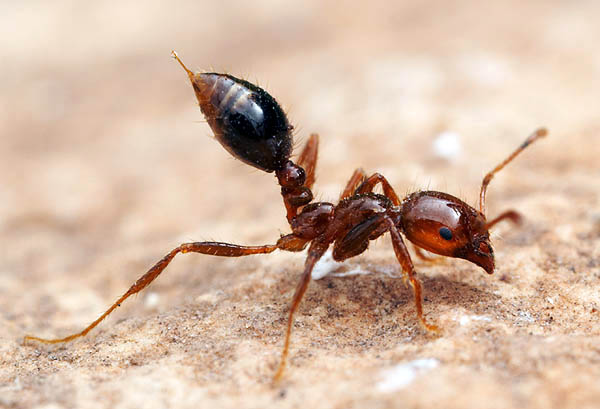Fire Ants’ Spread Aided by Partnership With Other Insects
December 7, 2011
By Kim McDonald
The spread of fire ants from Argentina in the United States has been aided by their partnership with local insects, according to a paper published in this week’s Proceedings of the National Academy of Sciences by Professor David Holway and colleagues from Texas A&M University, the University of Texas at Austin and the University of Illinois.

Fireant
photograph © Alex Wild 2006
The biologists found that fire ants protect aphids and other insects from attackers and in return get honeydew, a carbohydrate-rich liquid that the bugs excrete after feeding on plants.
In addition, Holway said, the researchers’ findings “indicate that native and introduced populations are assimilating different kinds of food resources. That is, they are acting largely as carnivores in their native South America, but introduced populations consume not only animals but also resources derived from plants.”
The scientists conclude in the article that their “laboratory and field experiments demonstrated that honeydew elevated colony growth, a crucial determinant of competitive performance, even when insect prey were not limiting. Carbohydrates, obtained largely through mutualistic partnerships with other organisms, thus represent critical resources that may aid the success of this widespread invasive species. These results illustrate the potential for mutualistic interactions to play a fundamental role in the establishment and spread of animal invasions.”
More on the study available from the PNAS paper: Wilder, Holway, Suarez, LeBrun & Eubanks. 2011. Intercontinental differences in resource use reveal the importance of mutualisms in fire ant invasions. PNAS
